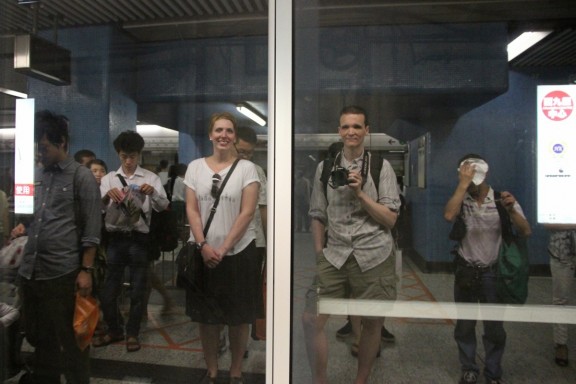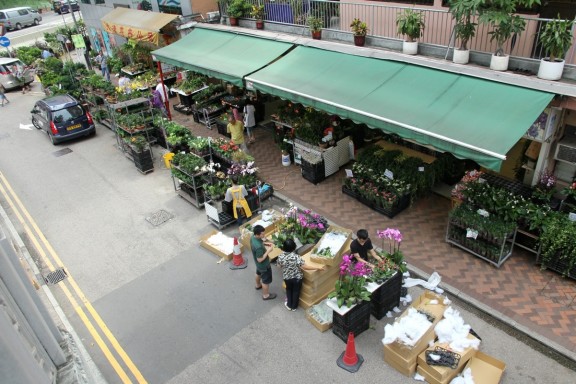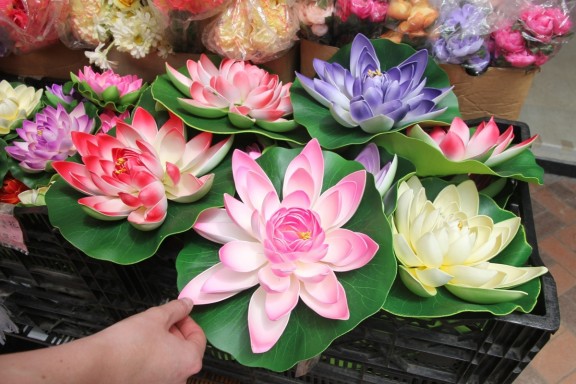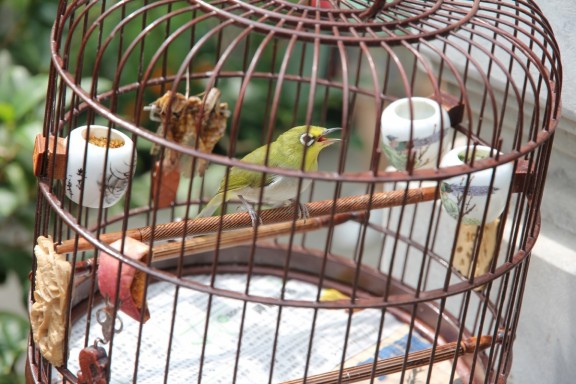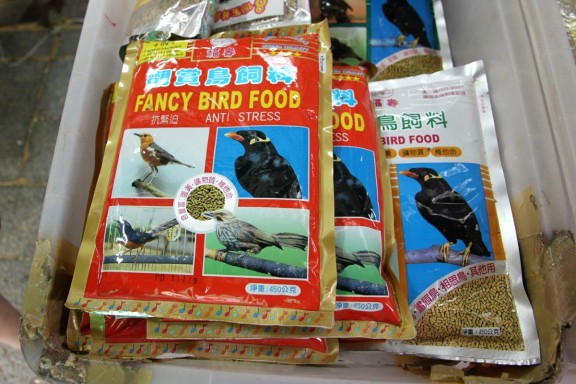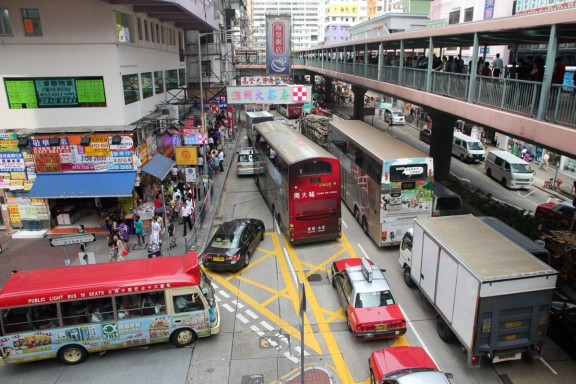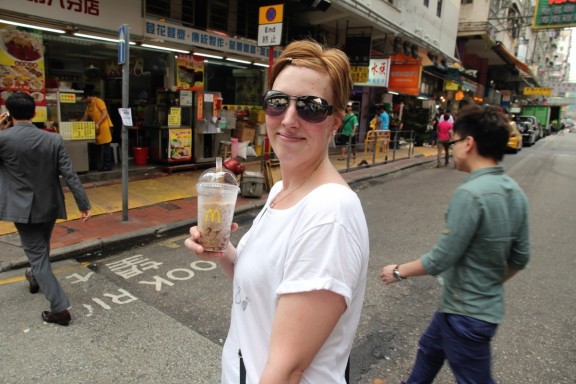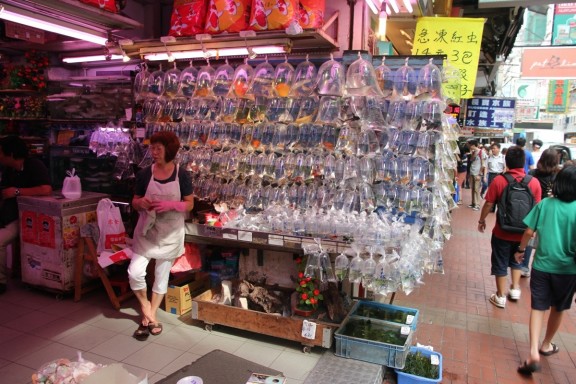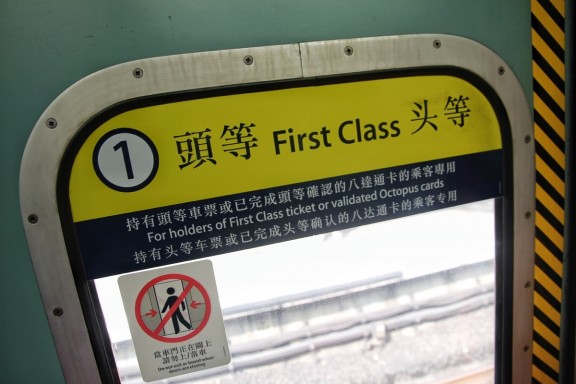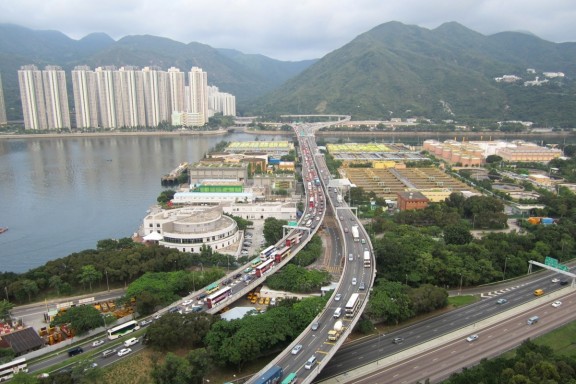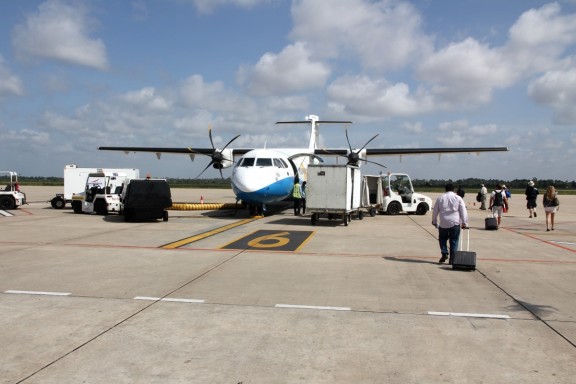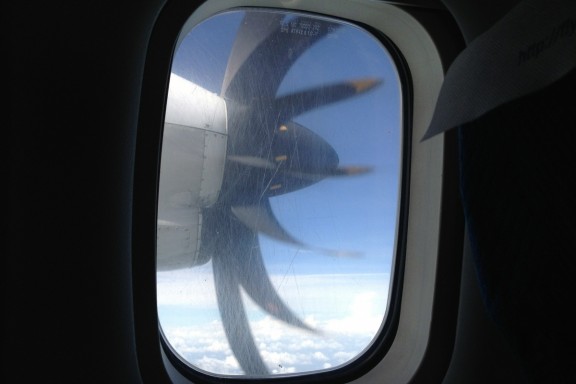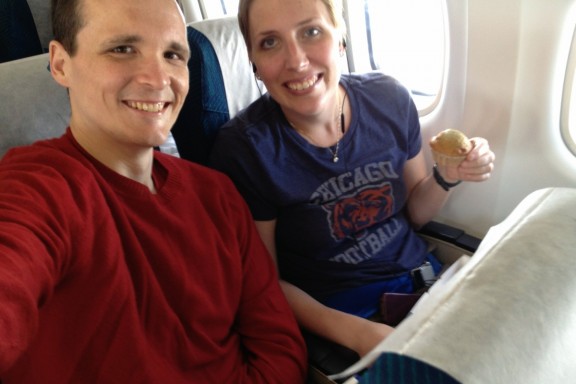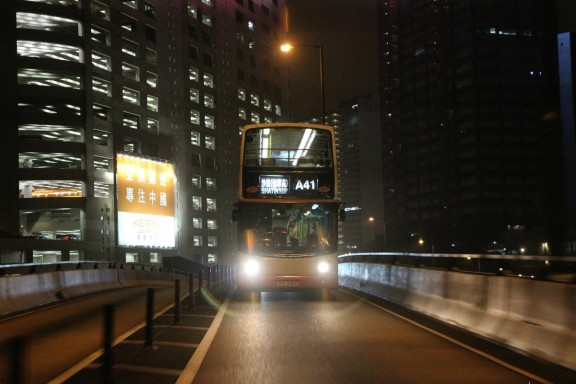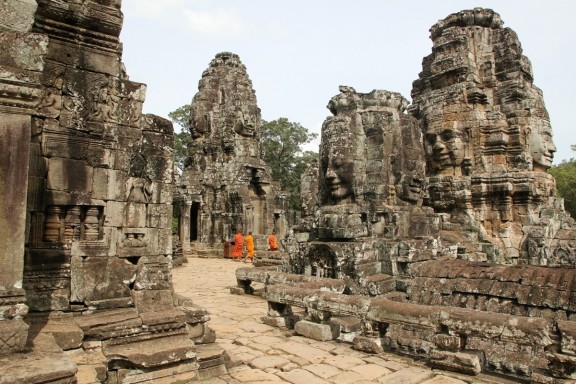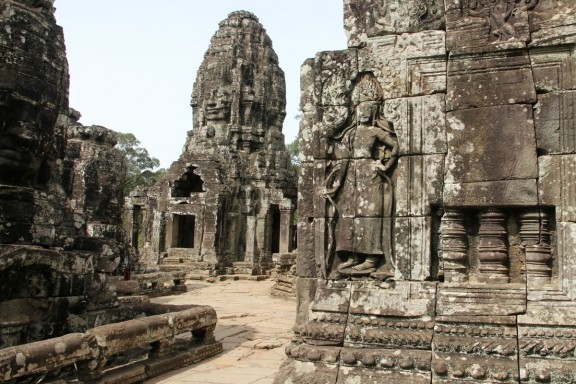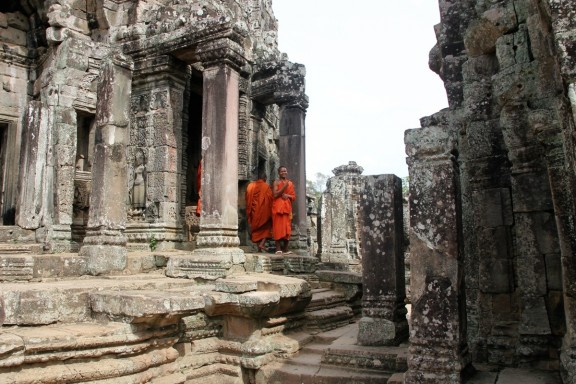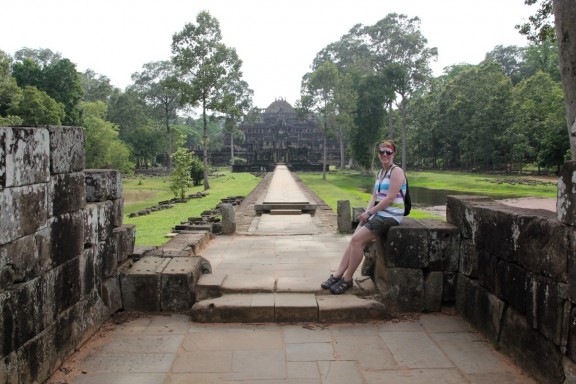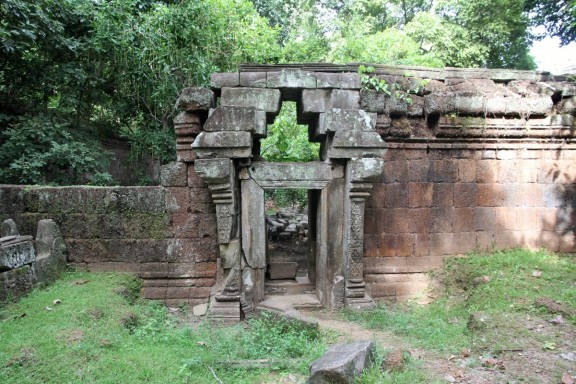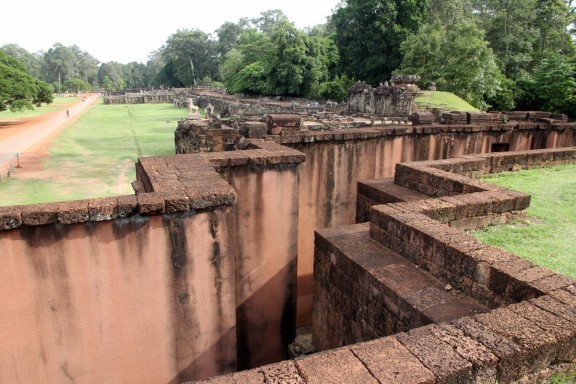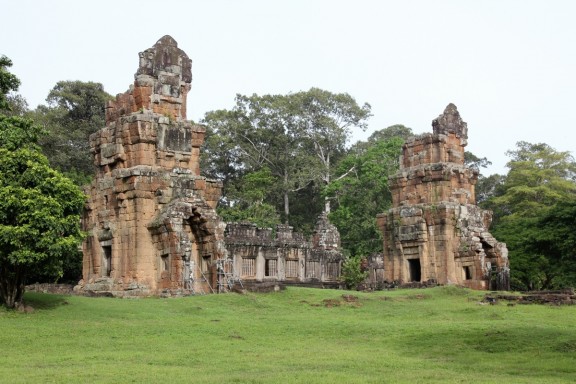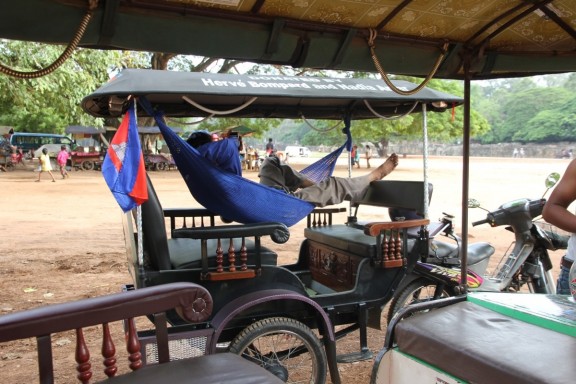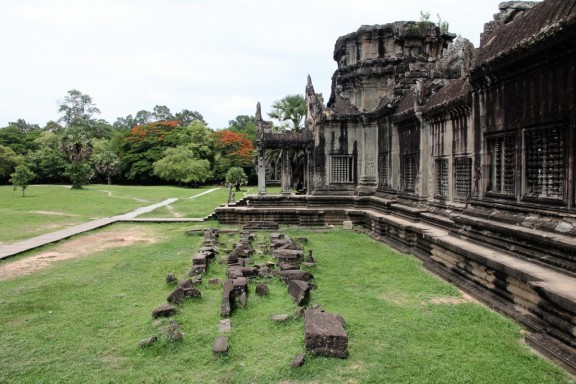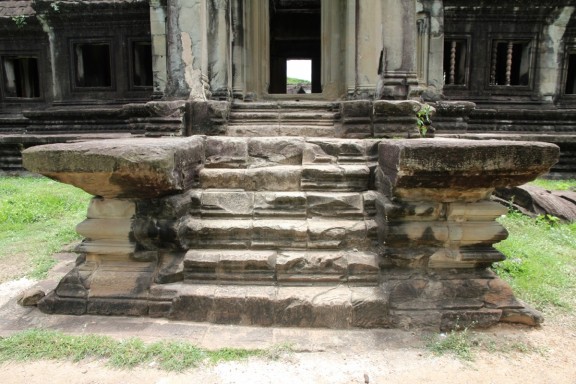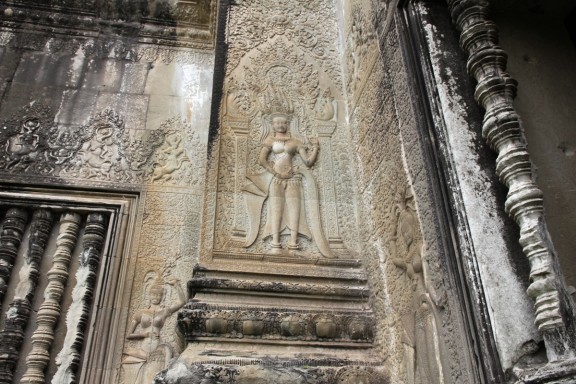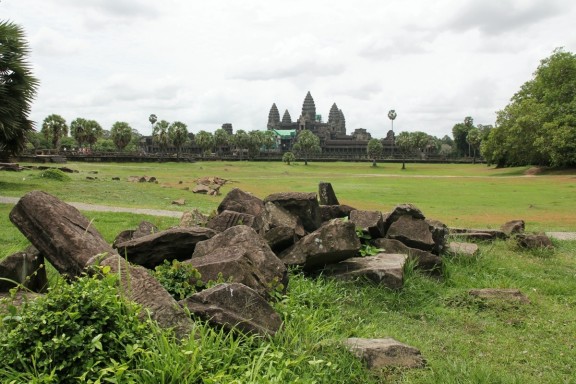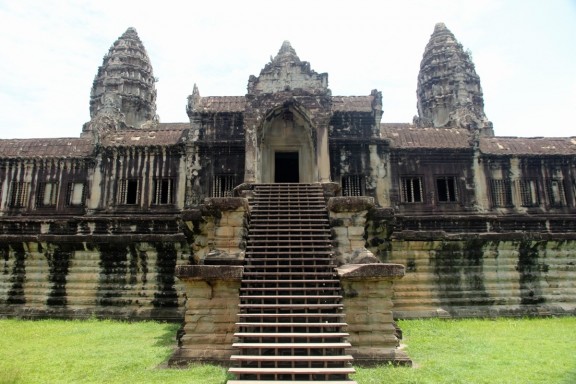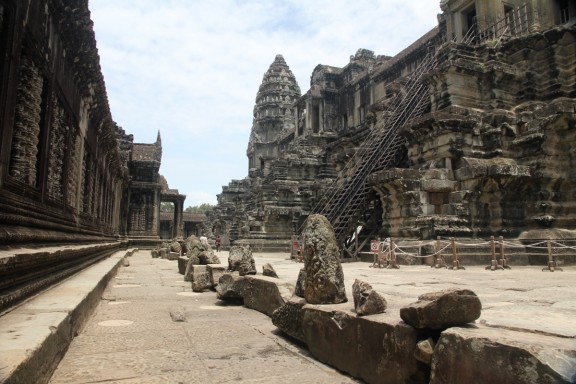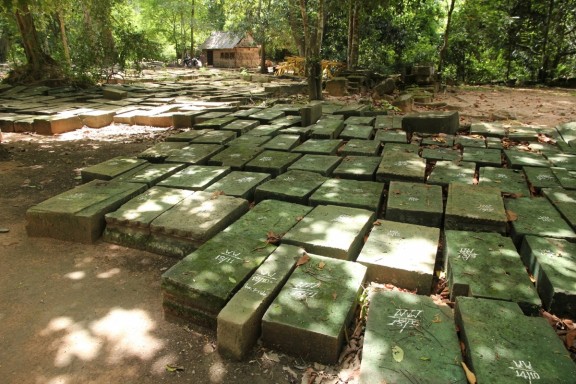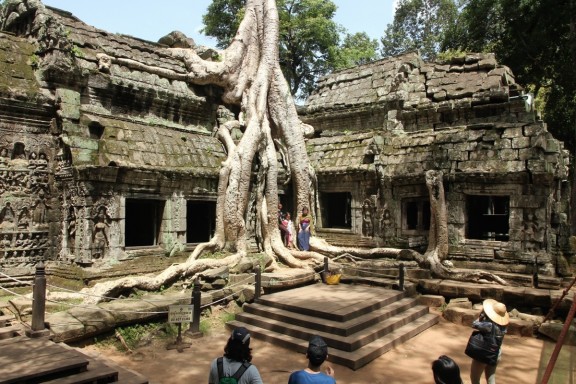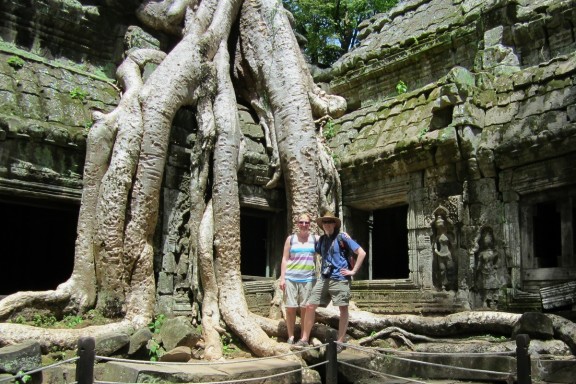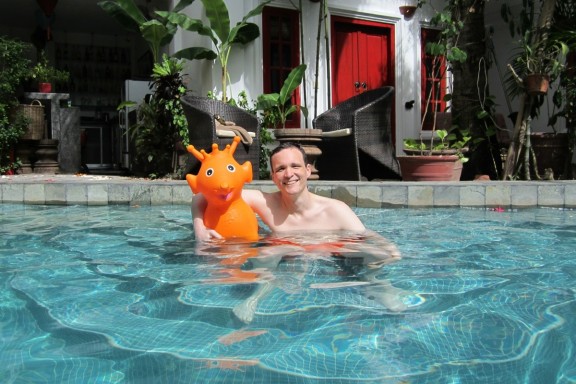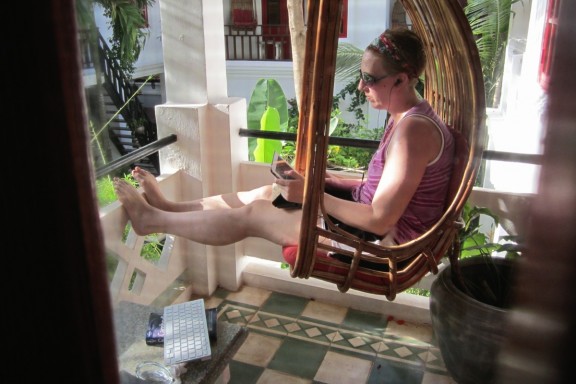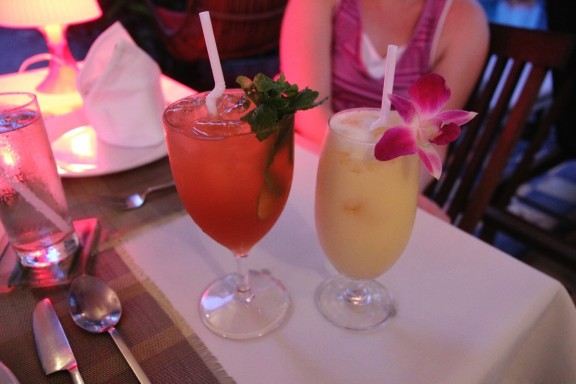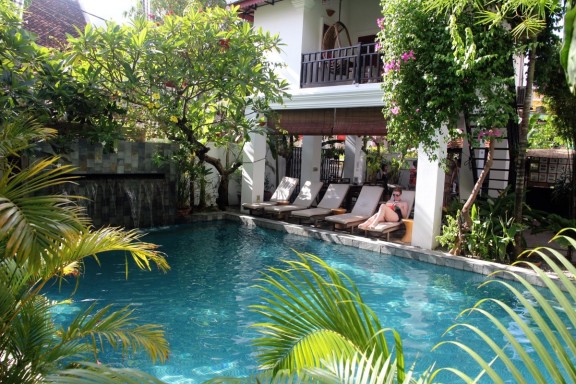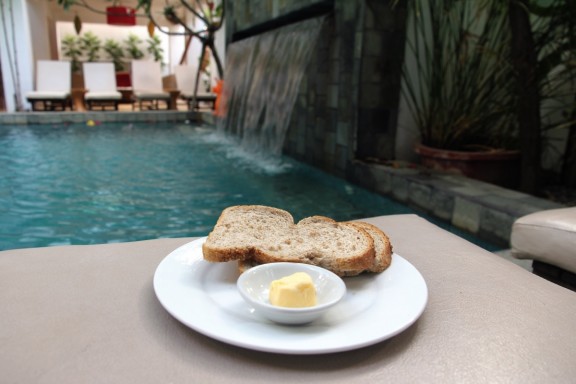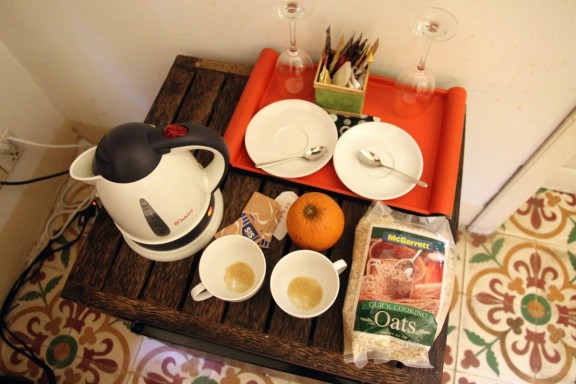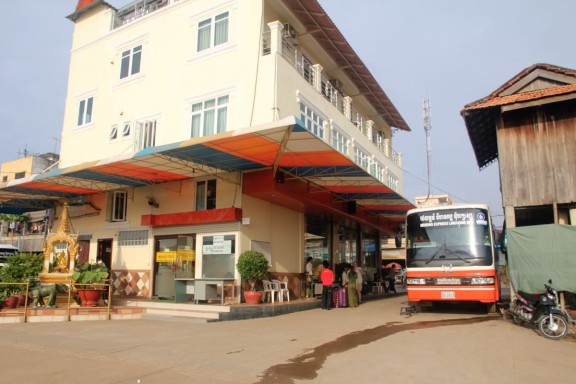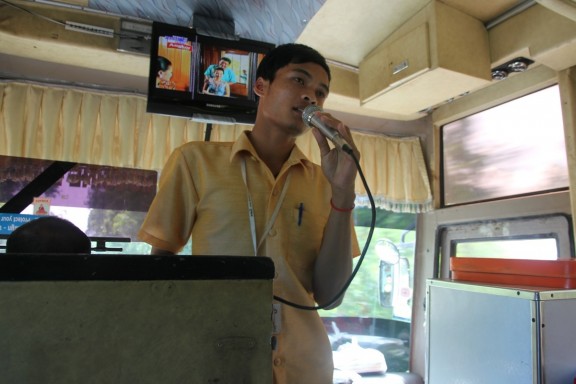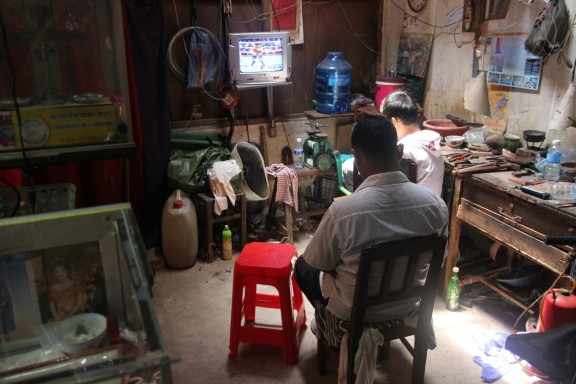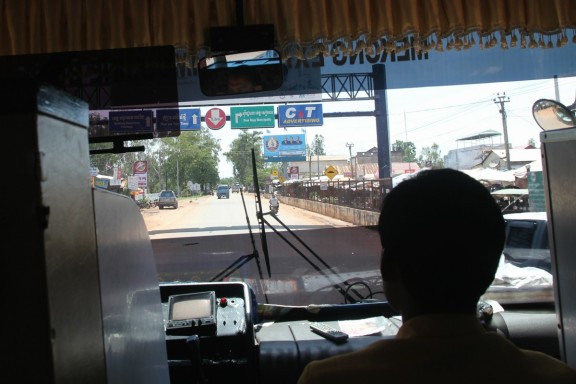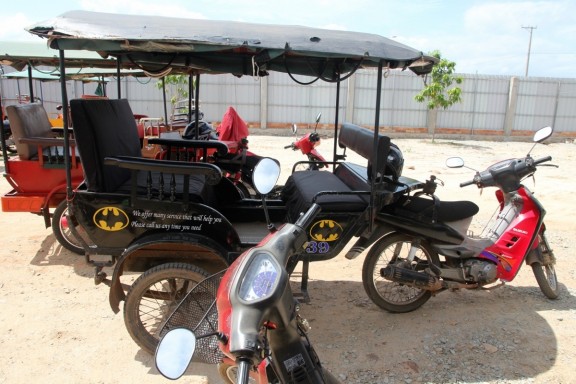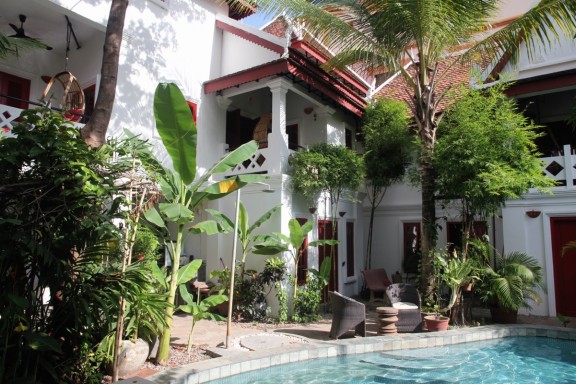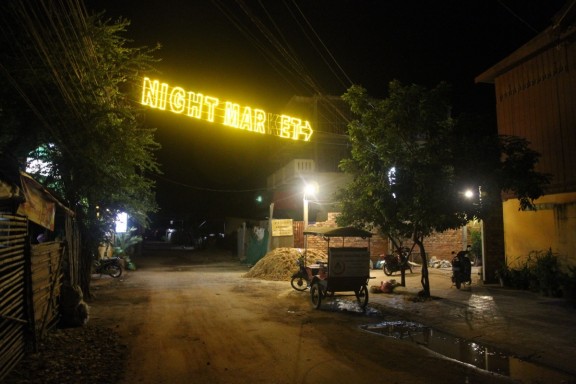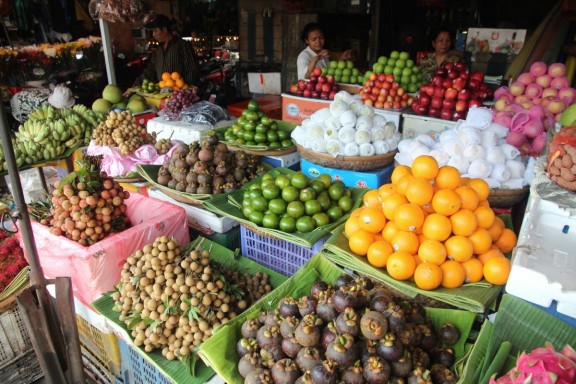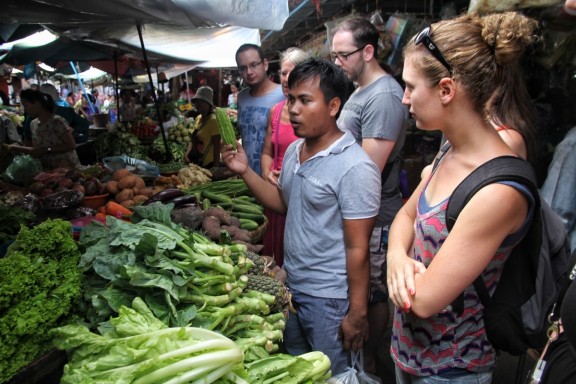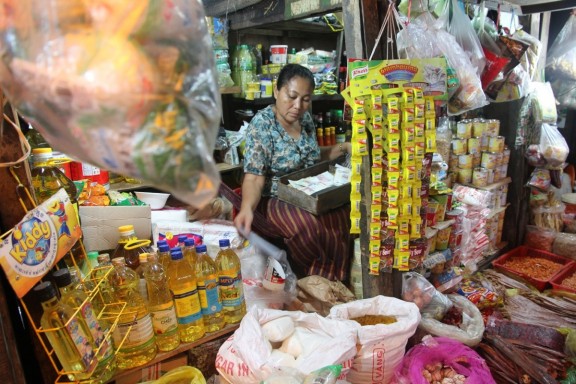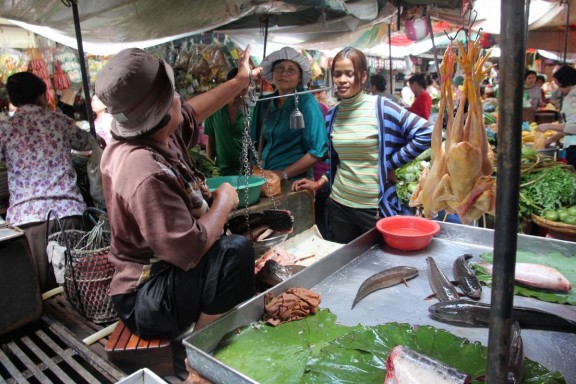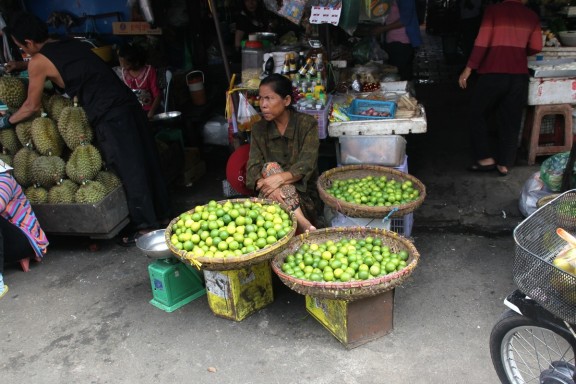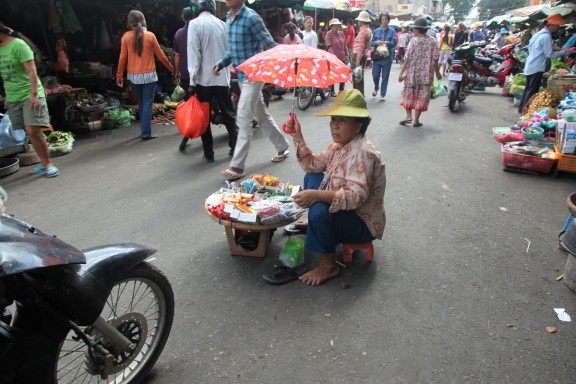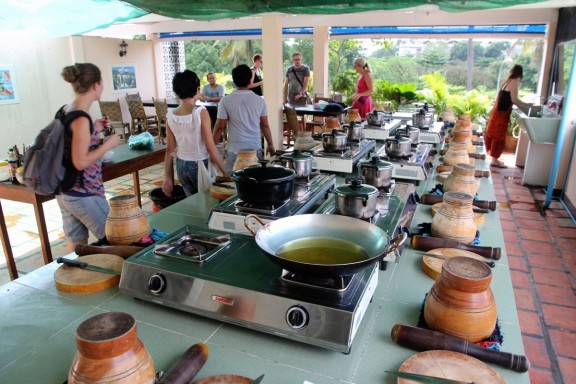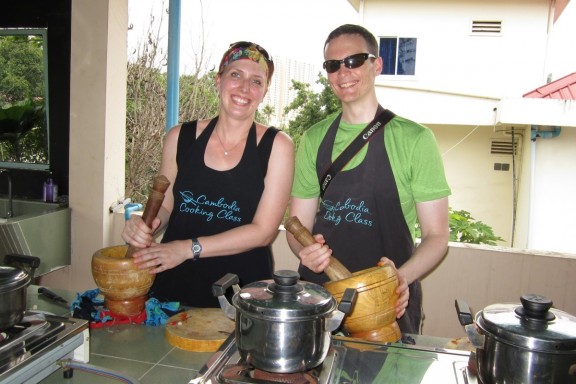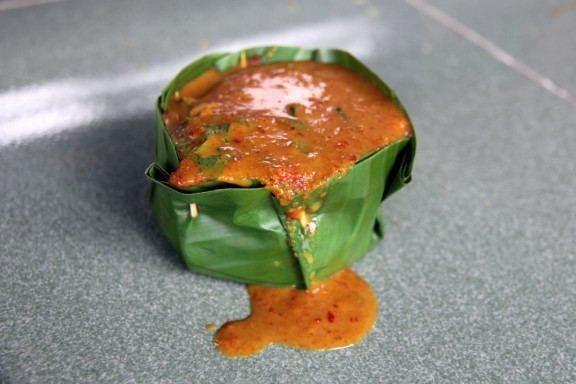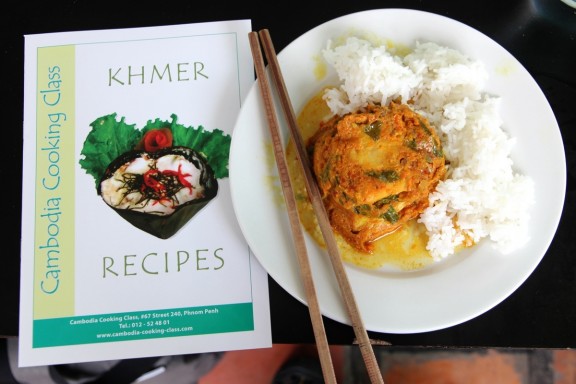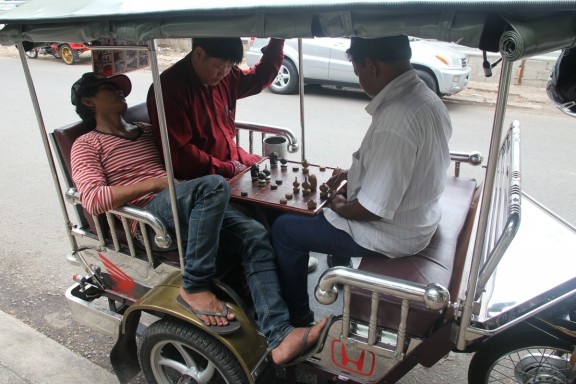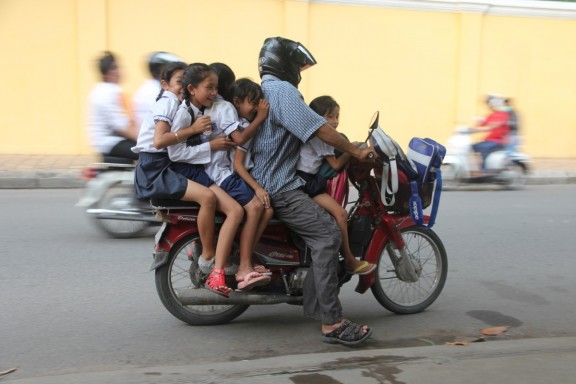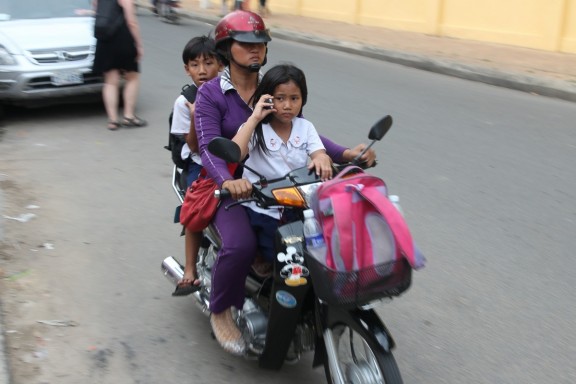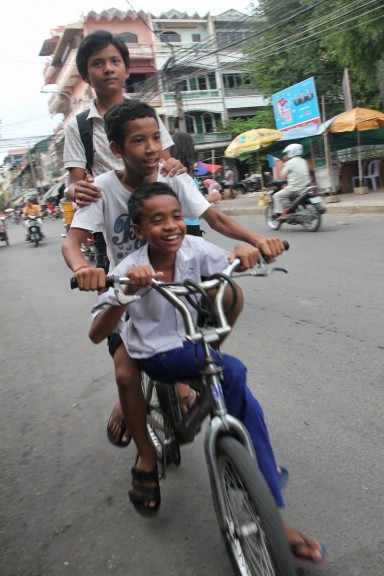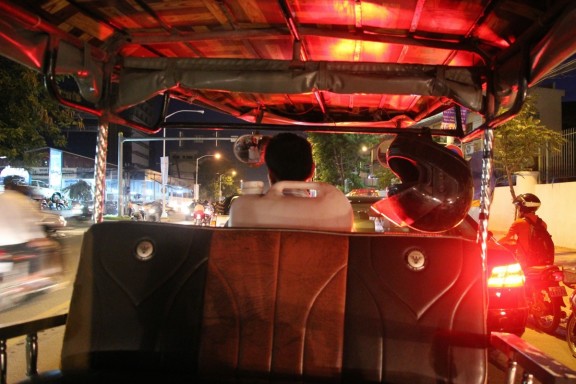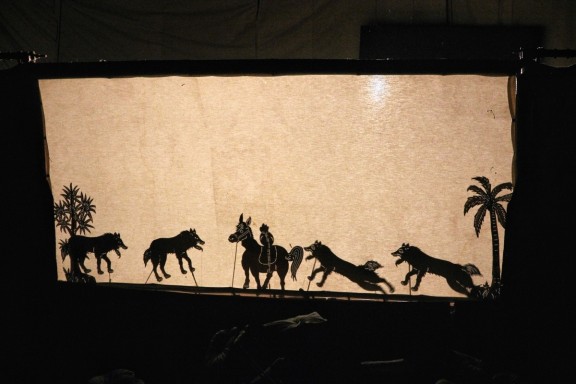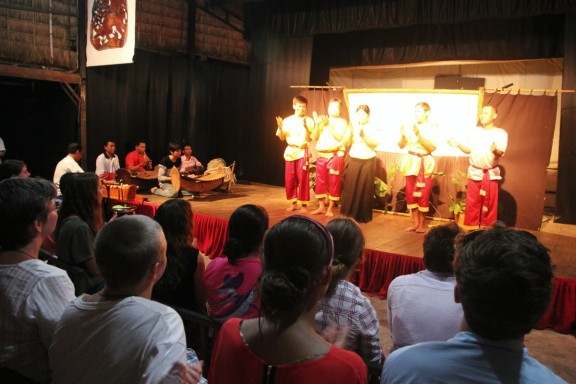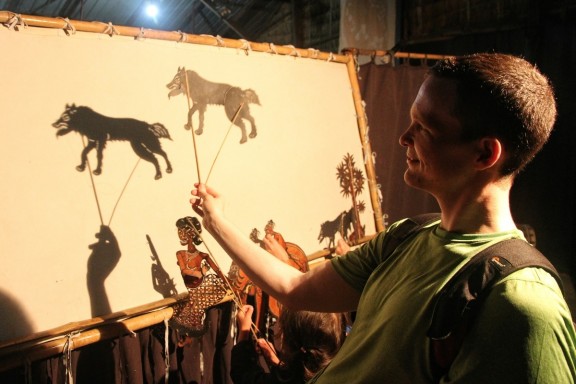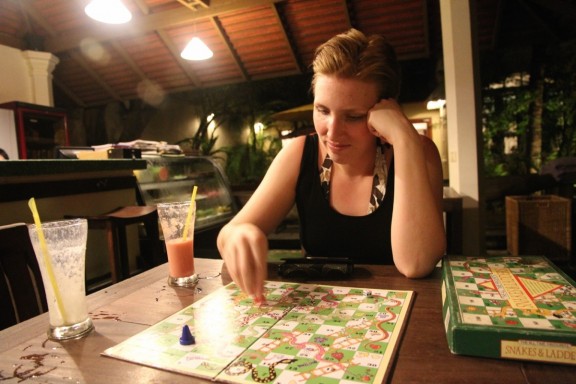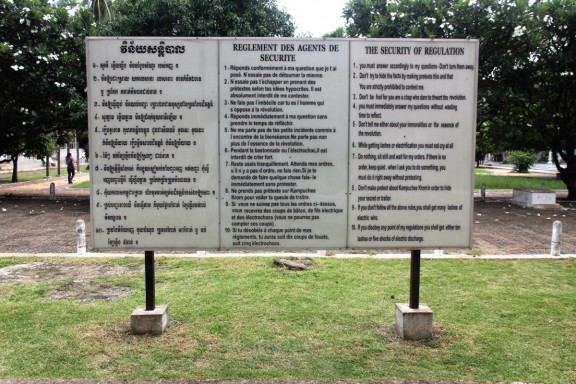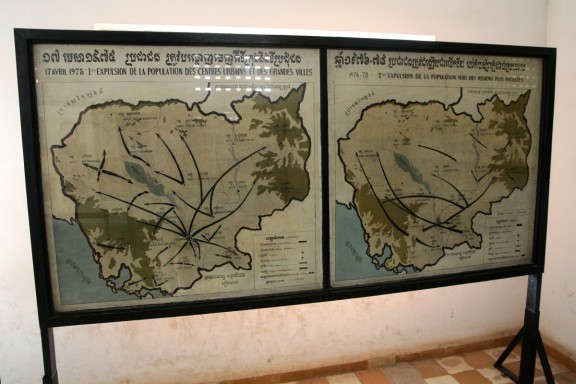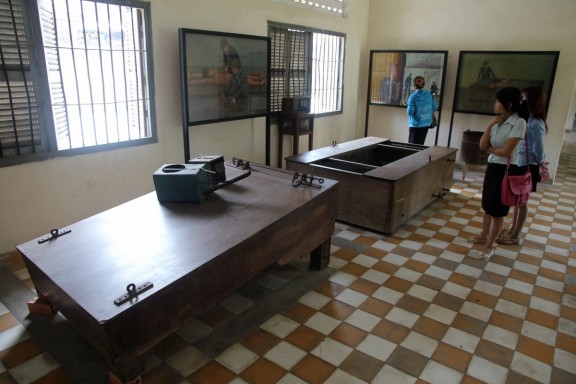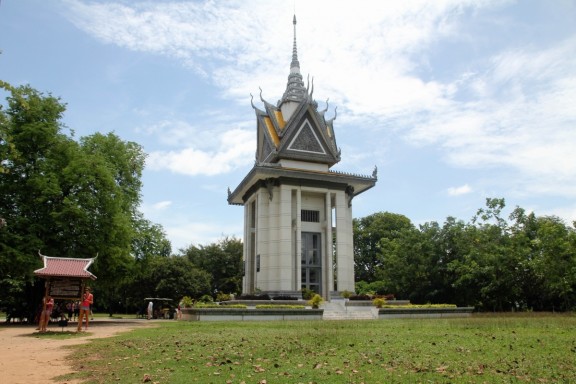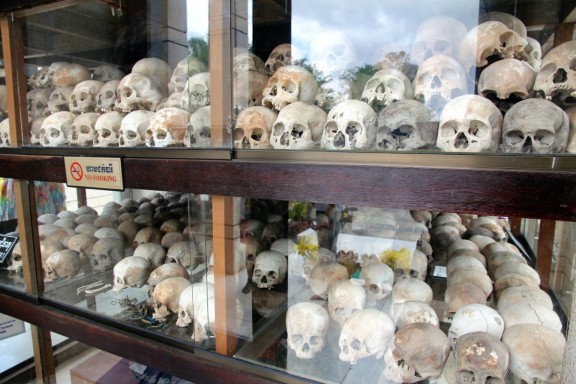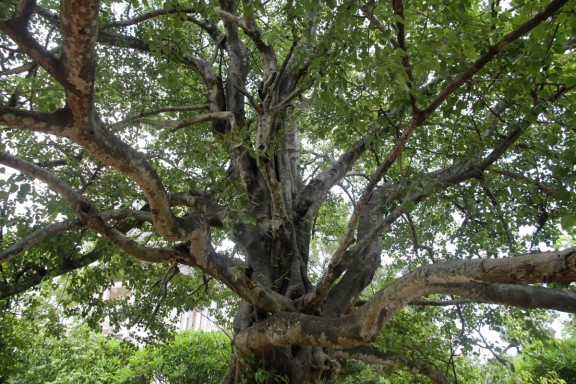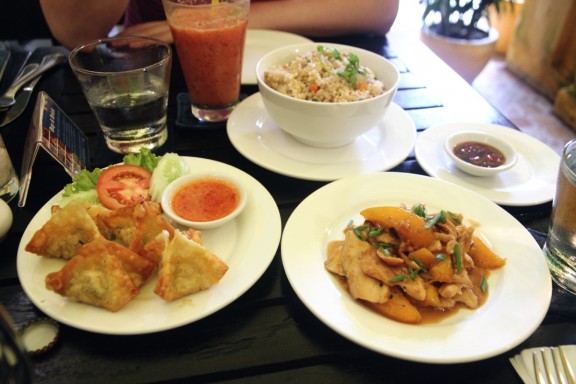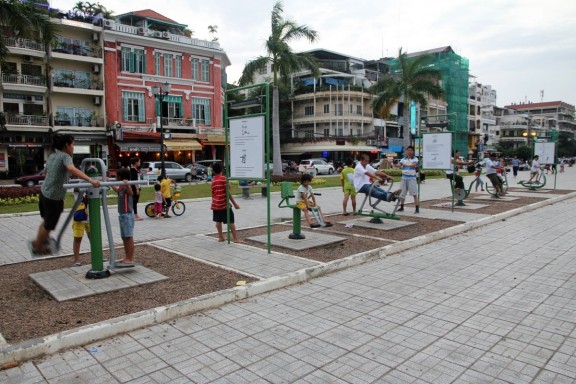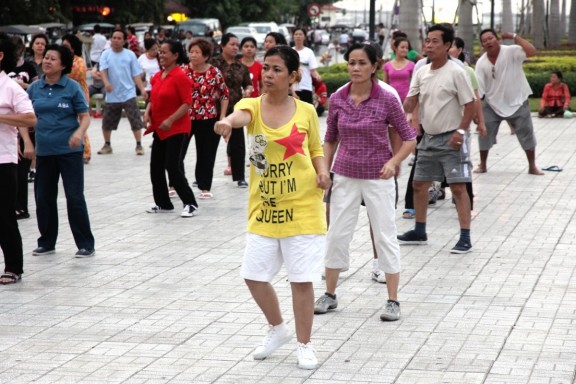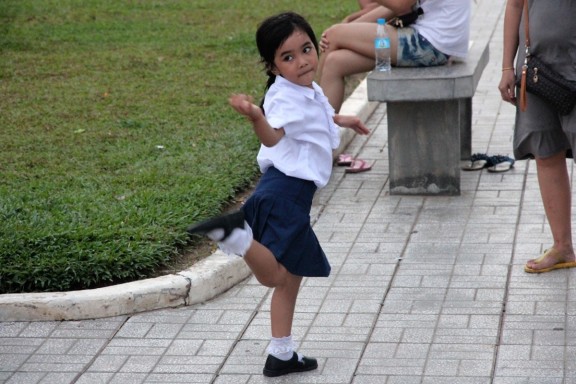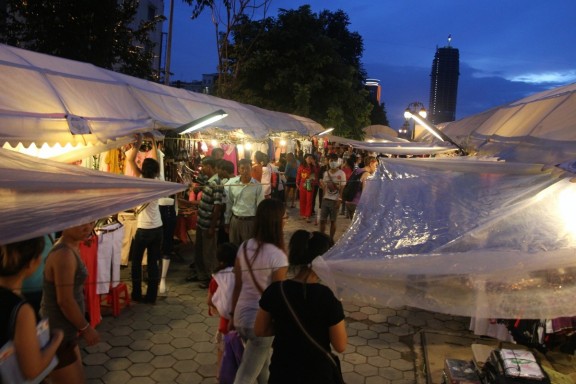After a lazy morning lounging in our beautiful hotel room, we enjoyed another delicious breakfast and decided to spend the afternoon shopping and spa-ing before our scheduled bike excursion later in the evening.

Matt loves the mangoes here. Like, a LOT.
Bangkok is full of gigantic shopping malls, but Terminal 21, opened last October, was worth checking out. The entire space resembls an airport terminal, and each floor is designed around a different city (Tokyo, San Francisco, Istanbul). We skipped all the regular, high-priced stores and headed for my favorite area – the basement food market and grocery store, where I was delighted to find an international food exhibition going on as well.
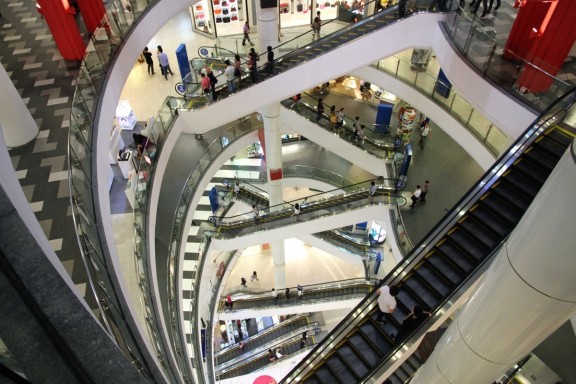
Aerial view from top floor of Terminal 21

Get excited, Katie - this is your souvenir
Near the mall was Bai Po, a little massage shop where we enjoyed another $10/hour massage (such a ridiculously good deal). As we were leaving it was beginning to rain, so we decided to get a cab and head toward the bike shop. By the time we hailed one it was pouring, and our driver told us it would take one hour to get to our destination (we had an hour and ten minutes until our tour started).
Traffic was so horrendously awful that with fifteen minutes to go, we looked at our map, consulted with our driver, and decided to walk the rest of the way. I don’t know how anyone ever gets anywhere driving in this city at certain times of the day. Hustling through the crowds (and the rain, still) we made it to the Grasshopper Adventures office at 6 PM on the dot.

Going nowhere fast
We were signed up for a Bangkok Night Ride, a four-hour tour through the back streets of the city and an opportunity to visit some of the markets and area temples after dark. Our guide set us up with our bikes and helmets, and our little group (us, a couple from Norway, and a girl from China), took off in a drizzly rain.

Ready to ride!
Almost immediately, the drizzly rain became a torrential downpour; we were soaked to the skin in minutes. We rode on until we reached an underpass, where we stopped to wait it out and try and secure whatever was in our bags.
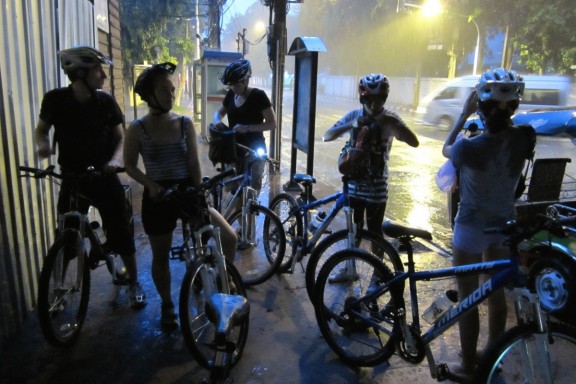
Really happy with my decision to wear a black t-shirt today
The rain did not let up, and we rode until we reached a pier where we loaded our bikes on a ferry and crossed the river (which was now lit up with lightning as well). Once across, we stopped for a long time at another underpass while our guide tried to decide if it was worth continuing on. (She also chose this moment to hand out disposable ponchos, which most of us declined for obvious reason.) As a group, we decided to go on; we were already soaked, so why not?
The tour is designed to avoid the city’s busiest streets; we rode along side streets and back alleys, past tiny shops and food stalls, waving hello to people as our single-file bike line rolled by. And by the time we reached Wat Arun (the Temple of Dawn), the rain stopped. 🙂
We visited Wat Arun on our last visit to Bangkok, and it is one of our favorite temples we’ve seen. But seeing it at night, gorgeously lit up with no tourists around, was pretty awesome. Our guide gave us a brief history of the temple and then we had some time to walk around and take pictures.
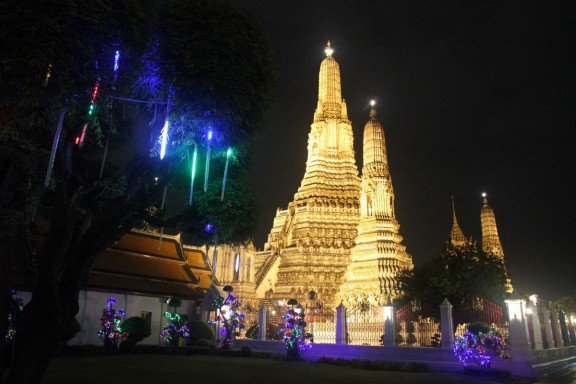
Wat Arun at night

Matt is happy because his clothes are starting to dry

Gate protectors
The next stop on our ride was the Flower Market; here we locked up the bikes and did this part on foot. We stopped at a stall where our guide bought us all drinks – soda is poured from its glass bottle and served in a plastic bag, ice and all, for easy transport.
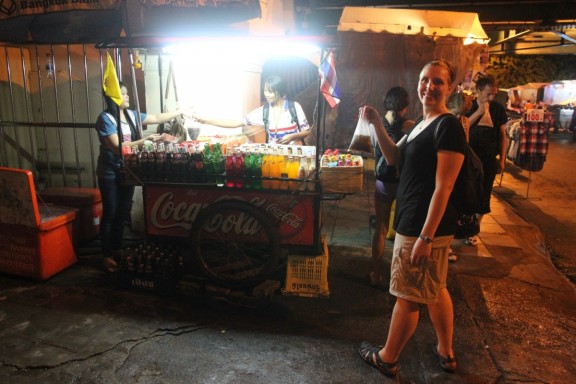
This is actually a very convenient way to carry a drink
Pak Khlong Talat (translated: market at the mouth of the canal) is Bangkok’s primary flower market and is open 24 hours every day, selling flowers, fruits, and vegetables. The flowers are all grown in Thailand, with many coming from nearby provinces and others from cities further north, like Chiang Mai. It is considered Bangkok’s largest wholesale market for flower vendors, and it is easy to understand why – I have never seen so many flowers in one place. The variety was incredible: orchids, roses, daisies, lotus flowers, jasmine and marigold blossoms, some sold loose, some in bouquets, and some strung into beautiful garlands.

Bags of marigold blossoms

Everything wrapped neatly
Along the way our guide bought us a variety of street snacks: sticky rice and sweet beans wrapped in a banana leaf, tiny coconut crepes filled with custard, and grilled sausages-on-a-stick served with cabbage leaves and fresh ginger. All delicious!
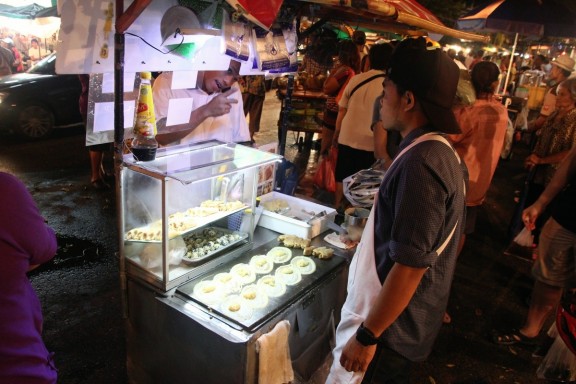
Crepes for everybody!

Trying Issan-style sausages
The last stop on our tour was Wat Po, the Temple of the Reclining Buddha. We also visited this spot previously, but it was still cool to walk around the temple grounds in complete solitude. After a few more pictures, we rode back to the bike shop, passing the Grand Palace along the way. This bike tour was an absolute delight, despite the downpour, and I’d recommend it to anyone visiting Bangkok.

Wat Po after dark
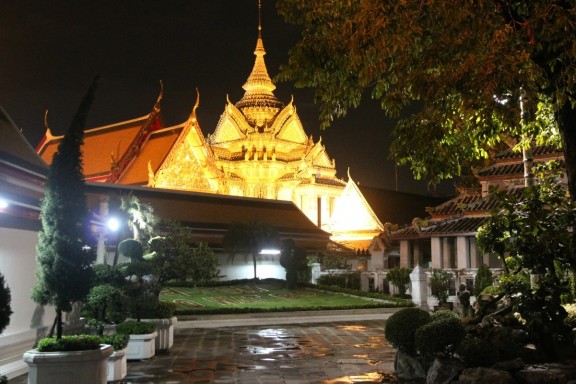
Beautifully lit halls
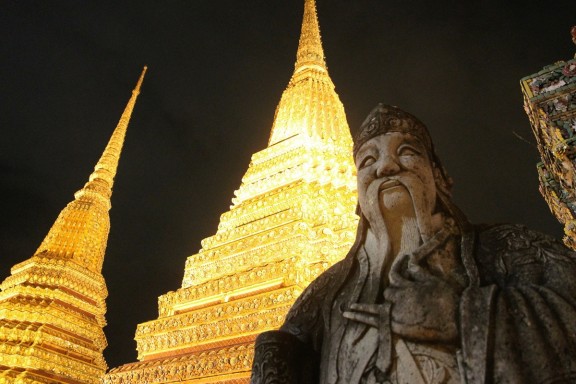
So cool to see these structures at night
After thanking our guide for an excellent outing, we went in search of a nearby pad Thai restaurant I’d read about. The huge woks of noodles being fried up outside should have been an indication we were in the right place, though we didn’t know for sure until we sat down and looked at the menu! We sampled regular pad Thai with tofu and egg and shrimp pad Thai wrapped in egg, omelet-style. Both were excellent and a ridiculous bargain at $1.50/plate.

All the cooking is done right out on the sidewalk

SO DELICIOUS OMG
Another great day – can’t let a little rain stop us! That’s what they make quick-dry pants for, after all. 🙂
